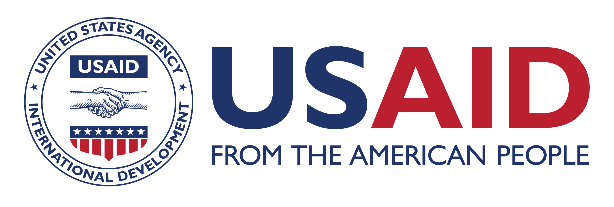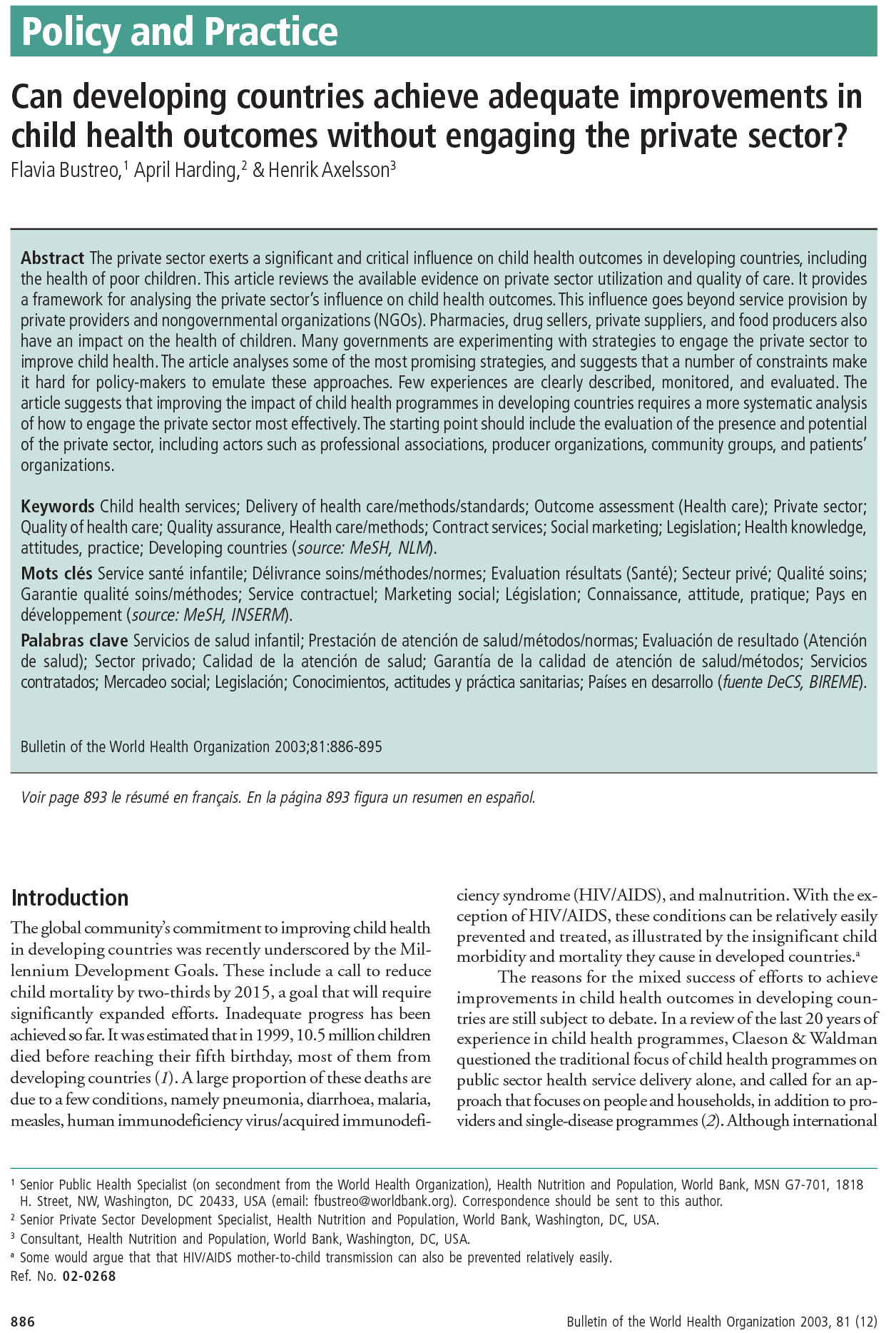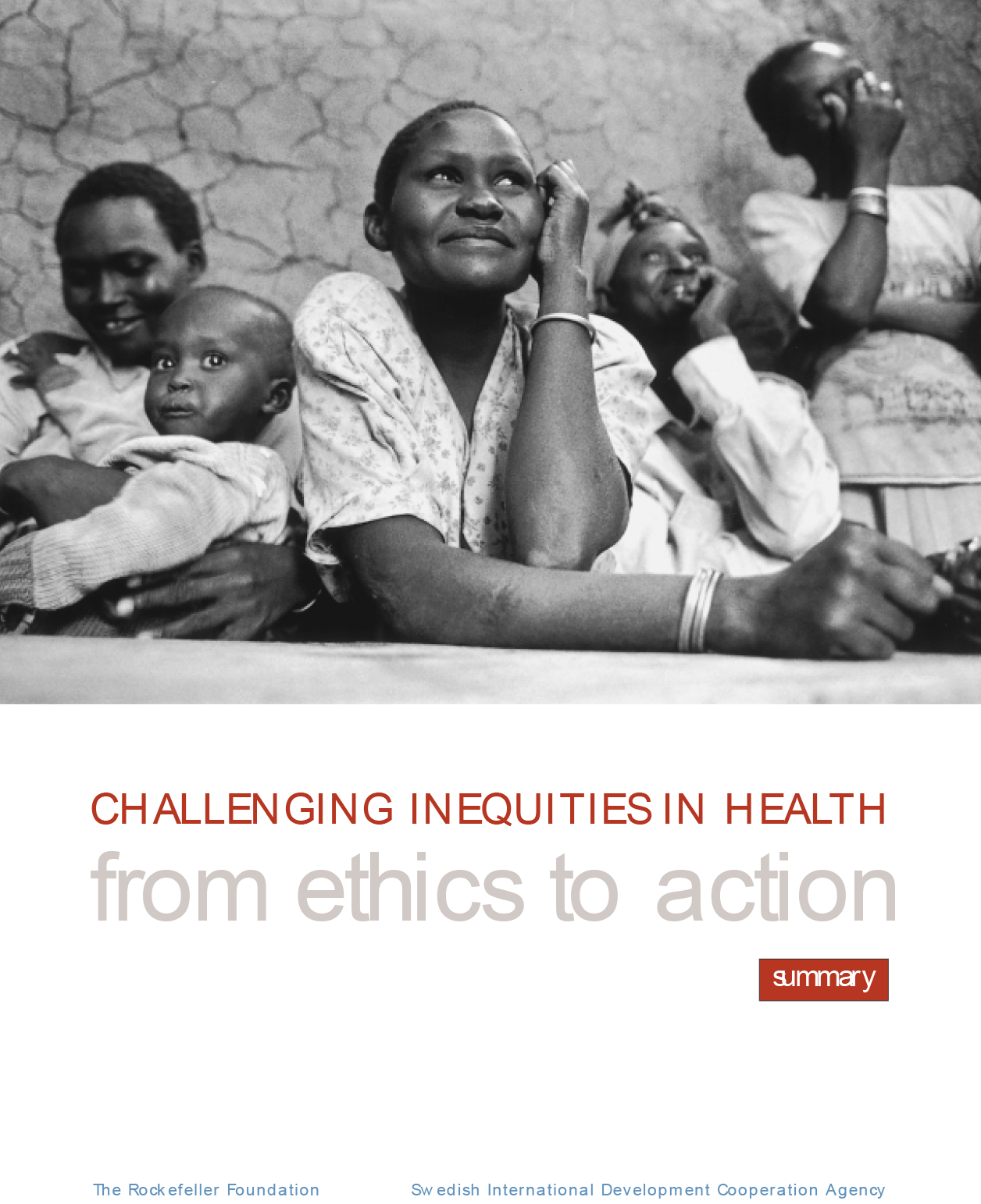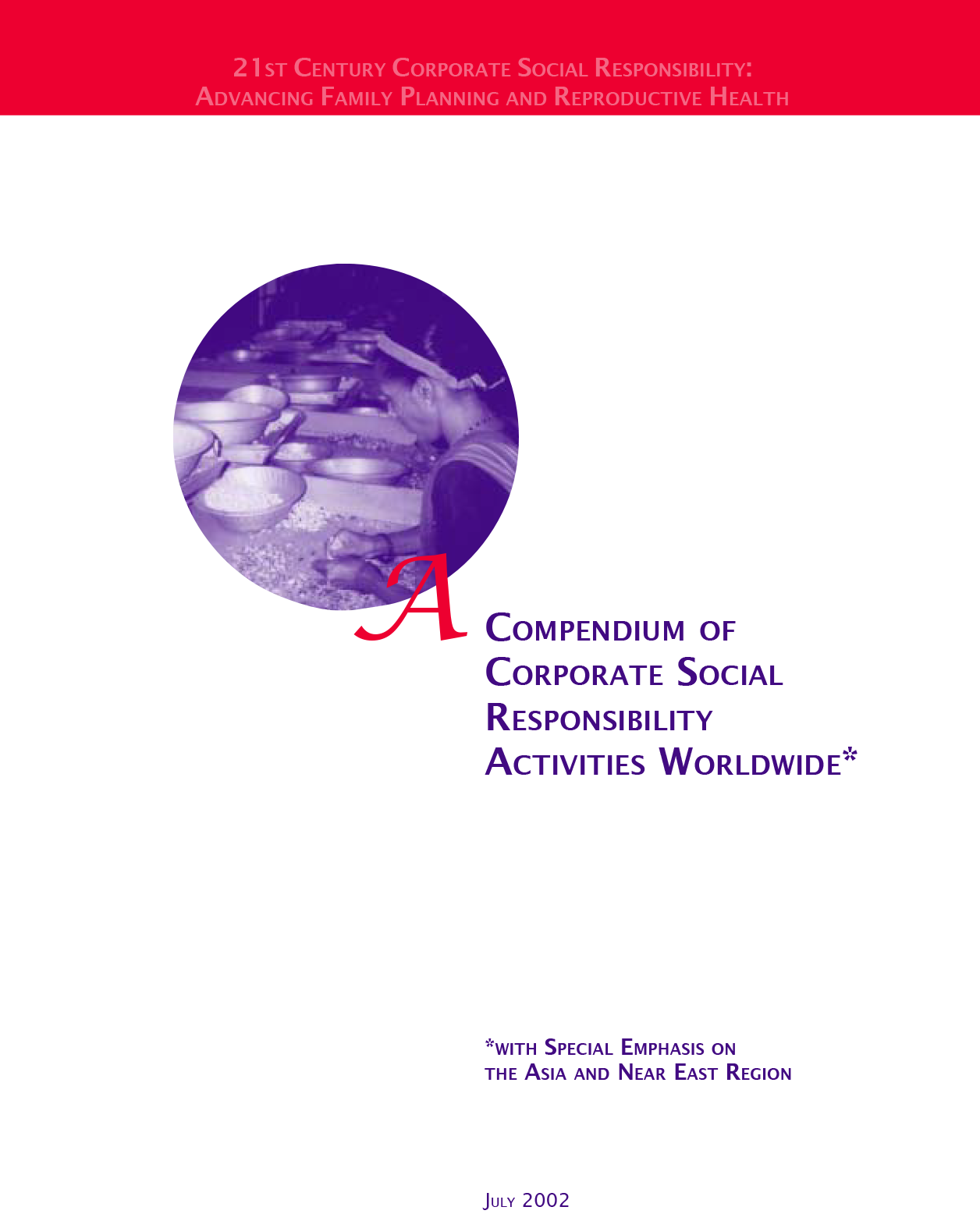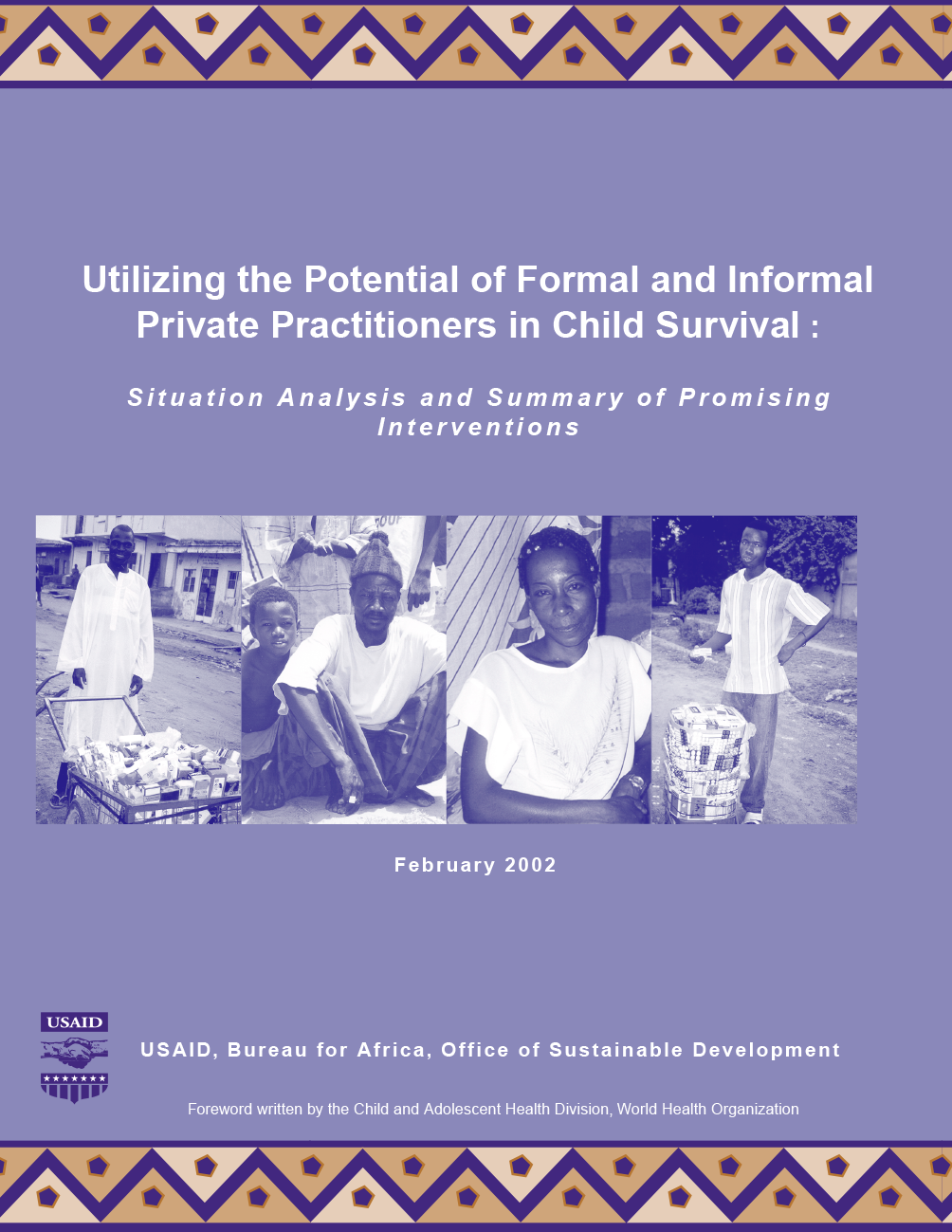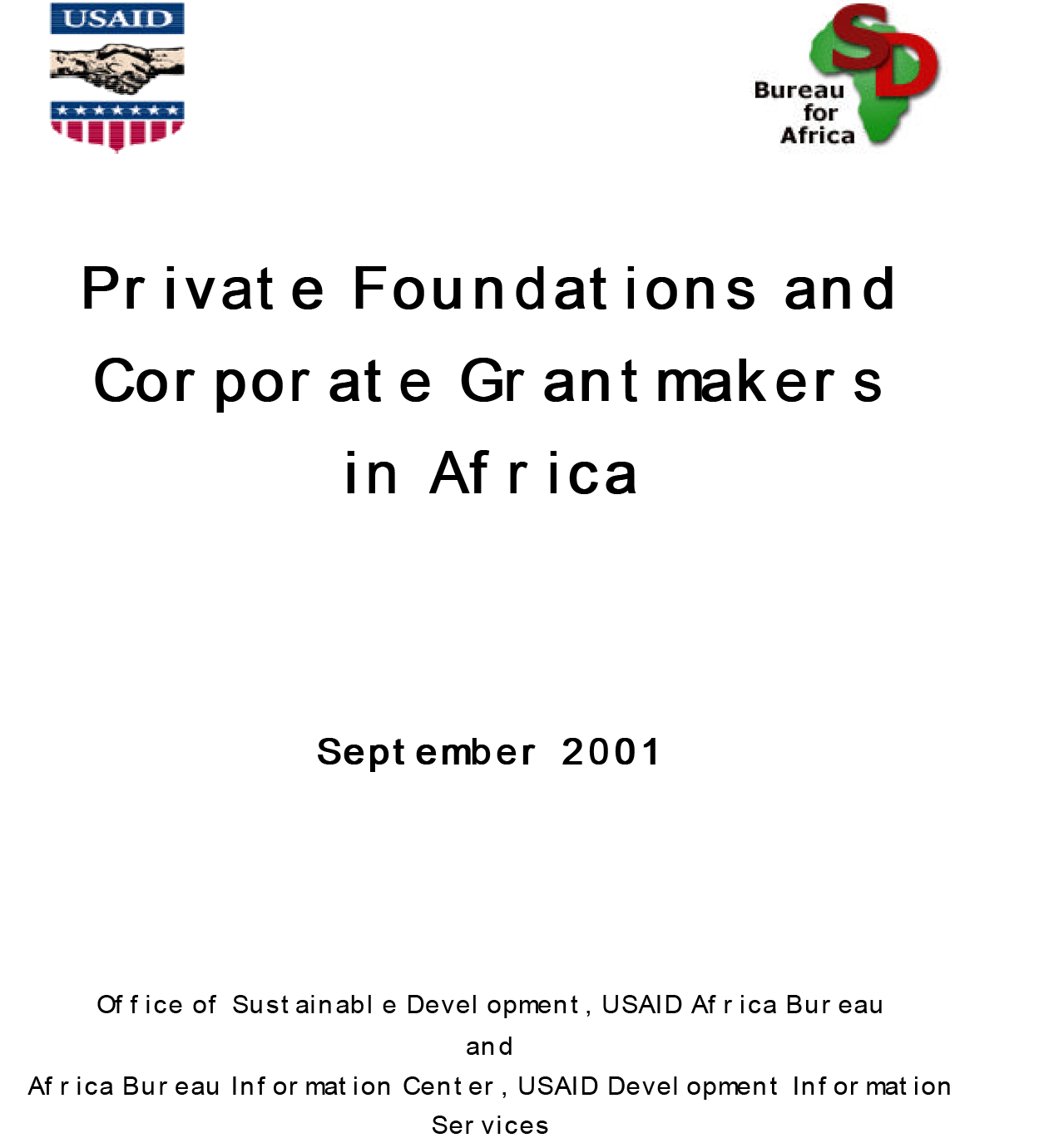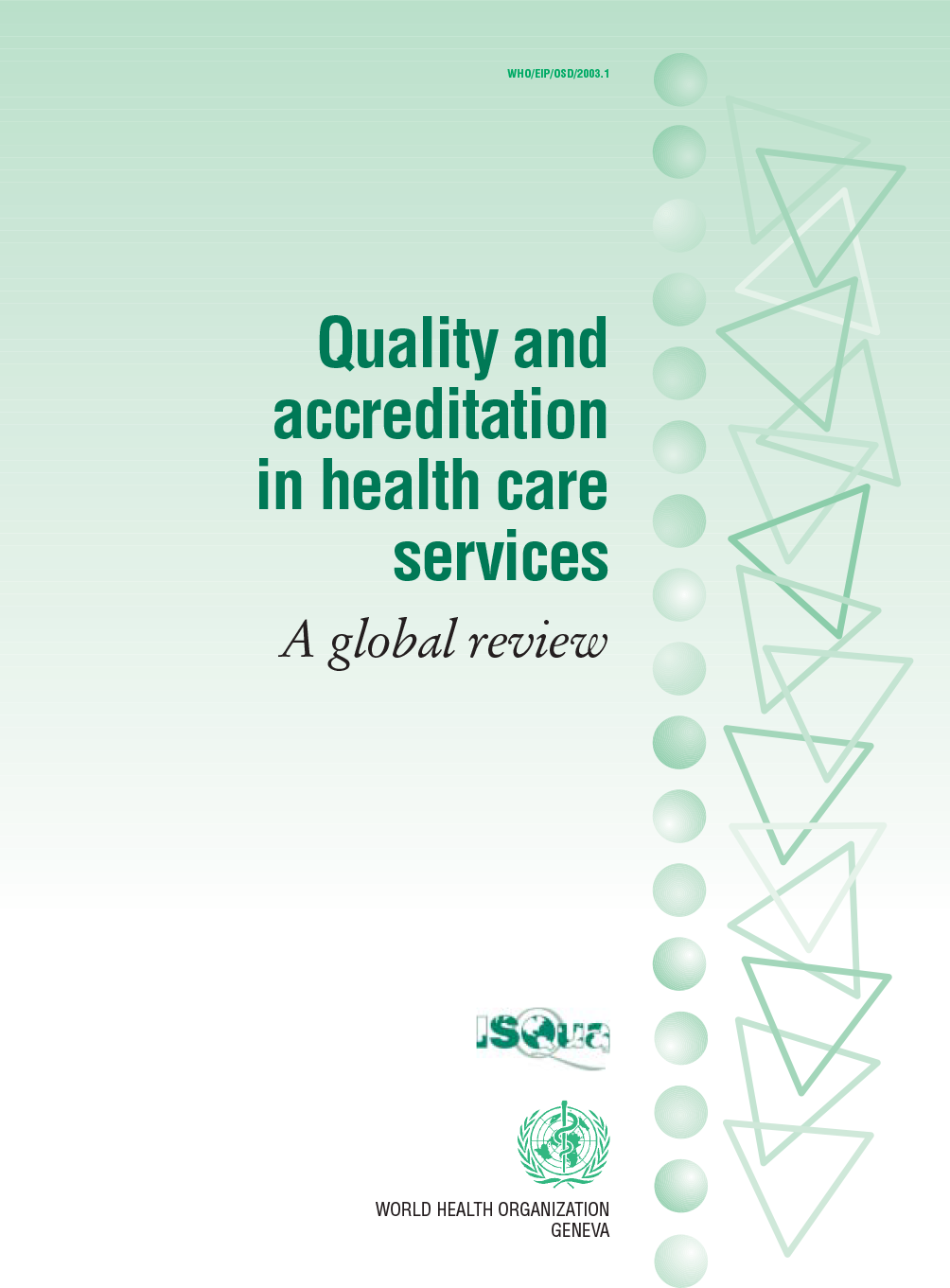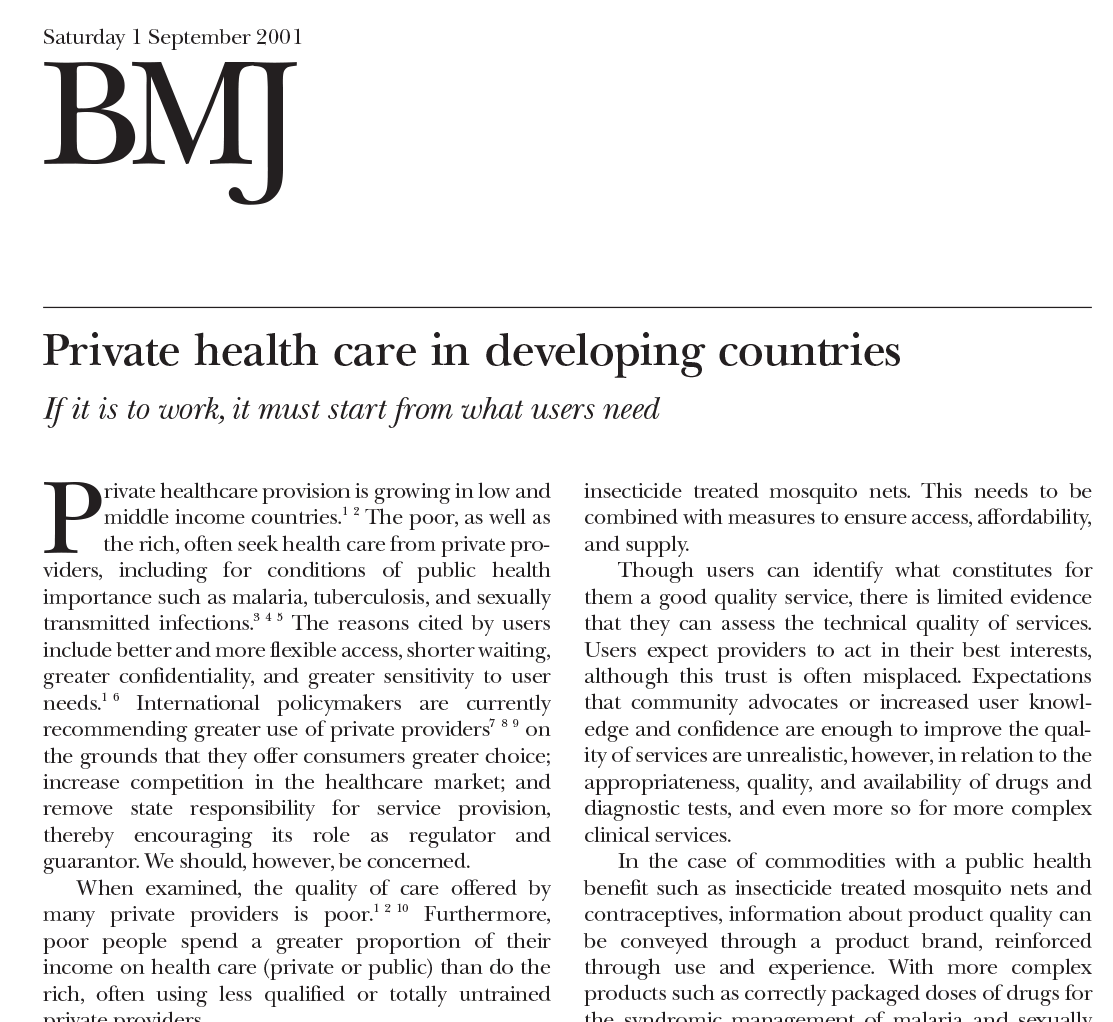
Resource Library
Diarrhoea Treatment Guidelines for Clinic-Based Healthcare Workers
Guidance on how to implement the new WHO/UNICEF recommendations for the use of ORS and zinc supplementation in the clinical management of diarrhea. The guidelines presented in this document are generic, that is, they will be most effective when modified to support the particular strategy being used to introduce the new recommendations in each country.
Resource Type : Tool
Country :
Year : 2004-06-01T15:30:00
Language : English
Project : SHOPS

Resource Library
The Communication Initiative
The Communication Initiative website and e-publications, such as The Drum Beat, are designed for the international development community and anyone interested in communication for social development and change. The current network includes more than 50,000 individuals and organisations. The CI strategy includes provision of real-time information on communication and development experiences and thinking, facilitating horizontal linkages between people engaged in communication action, peer commentary on programmes and strategies and taking opportunities to promote strategic thinking on communication and development issues and problems.
Resource Type : Other
Country :
Year : 2005-12-12T10:45:00
Language :
Project : SHOPS

Resource Library
Can developing countries achieve adequate improvements in child health outcomes without engaging the private sector?
The private sector exerts a significant and critical influence on child health outcomes in developing countries, including the health of poor children. This article reviews the available evidence on private sector utilization and quality of care. It provides a framework for analyzing the private sector's influence on child health outcomes. This influence goes beyond service provision by private providers and nongovernmental organizations (NGOs). Pharmacies, drug sellers, private suppliers, and food producers also have an impact on the health of children. Many governments are experimenting with strategies to engage the private sector to improve child health. The article analyses some of the most promising strategies, and suggests that a number of constraints make it hard for policy-makers to emulate these approaches. Few experiences are clearly described, monitored, and evaluated. The article suggests that improving the impact of child health programmes in developing countries requires a more systematic analysis of how to engage the private sector most effectively. The starting point should include the evaluation of the presence and potential of the private sector, including actors such as professional associations, producer organizations, community groups, and patients' organizations.
Resource Type : Other
Country :
Year : 2003-08-24T10:45:00
Language : English
Project : SHOPS

Resource Library
Challenging Inequities in Health: from ethics to action
This volume, Challenging Inequities in Health, was conceived as a response to the following: Concerns about widening "health gaps" both between and within countries; disproportionate research focus on inequalities in health in the "North" to the relative neglect of the "South"; and inadequate analytic tools and pragmatic policies to redress health inequities. Through a collective effort of researchers and practitioners called the Global Health Equity Initiative (GHEI), a set of in-depth country studies and conceptual analyses on health equity were undertaken. The main findings of this effort are presented in this book with the central claim that issues of equity, or distributive justice, deserve primary consideration in health and social policy deliberations. Insights about health equity from the fields of epidemiology, demography, economics and other disciplines are brought to life in case studies from Bangladesh, Chile, China, Japan, Kenya, Mexico, Russia, South Africa, Sweden, Tanzania, the United Kingdom, the United States and Vietnam. The subject matter ranges from adolescent livelihoods in Tanzania to the health burden of peoples living in marginalized counties in Mexico, from the historical antecedents of health equity in Japan to the recent increase in the gender gap in life expectancy in Russia. As a group, the studies point unambiguously to the existence and multiple dimensions of inequities in health around the globe—in rich and poor countries alike.
Resource Type : Report
Country : Kenya, Russia, South Africa, Tanzania, Vietnam
Year : 1999-11-30T00:00:00
Language : English
Project : SHOPS

Resource Library
A Compendium of Corporate Social Responsibility Activities Worldwide
This Compendium is a compilation of corporate social responsibility (CSR) activities implemented by the business community and business organizations around the world. It is the product of an intensive desk research by CATALYST that involved: a broad website search of CSR organizations, multinationals, and national companies; a review of company publications and reports; and communication and interviews with company executives. The major part of this Compendium is devoted to CSR activities that directly addresses health (Part I). A number of CSR activities that directly address other development areas (Part II) are included to illustrate the breadth and diversity of CSR initiatives, as well as the prospects of integrating health into these activities. These other activities include CSR advocacy, youth development, and community development activities.
Resource Type : Other
Country :
Year : 2002-07-01T00:00:00
Language : English
Project : SHOPS

Resource Library
Trends and Issues Affecting Service Delivery Over the Next Decade
This document has been written at the request of the Service Delivery Improvement Division as part of its planning process for the next decade. It focuses primarily upon features that concern the provision of services, not upon all aspects of reproductive health programs. The first five sections present the factual background; the final two sections build on those to suggest future program strategies and options.
Resource Type : Other
Country :
Year : 2005-08-22T15:45:00
Language : English
Project : SHOPS

Resource Library
Utilizing the Potential of Formal and Informal Private Practitioners in Child Survival: Situation Analysis and Summary of Promising Interventions
Studies from different parts of the world show that formal and informal private practitioners are popular sources of treatment for diarrhea, acute respiratory infection, and malaria, which combined are estimated to cause over half of childhood mortality in developing countries. Private practitioners are generally perceived by the community to be more accessible, more sensitive to client needs and more willing to spend time with their clients, compared to the service given in the public sector. However, because of the wide evidence of their substandard clinical services, most national health policies prohibit the practice of unqualified practitioners and ignore them in national child survival programs. Health authorities fear that involving unqualified private practitioners could be perceived as formal recognition and encouragement to continue their substandard practices. The complex factors influencing their practices and the unclear channels of contacting them make it challenging to include them in child health programs.
Resource Type : Other
Country :
Year : 2002-02-22T13:30:00
Language : English
Project : SHOPS

Resource Library
Private Foundations and Corporate Grantmakers in Africa
The purpose of this document is to pull together in accessible form information on private foundations and grantmakers and their activities and priorities for Africa within the various sectors that USAID works. It is anticipated that this document will facilitate the formation of partnerships and alliances that further the objectives of development in Africa. This information will eventually be available in electronic format and will be updated periodically.
Resource Type : Tool
Country :
Year : 2001-09-01T11:00:00
Language : English
Project : SHOPS

Resource Library
Quality and Accreditation in Health Care Services: A Global Review
This report provides an overview of the rationale, structures, activities, tools and technologies that characterize quality assurance and quality improvement and accreditation in health care. This aim is consistent with the increased worldwide interest in the quality of health systems that was reflected in – and to some extent generated by – The world health report 2000 – Health systems: improving performance. One measure of such interest is that the understanding and application of concepts and terms relevant to health systems have been continually evolving, even while this report was being prepared. This evolution is demonstrated by the term “efficiency”, which is increasingly understood to be a measure of the output of a system relative to the maximum possible output that could be achieved for a given level of input. (Thus, even at low levels of input, a country’s health system may be technically efficient, though its level of quality may still be low.) This report constitutes a snapshot – from a six-month, wide-angle exposure, carefully framed – of health systems quality and accreditation in health care. Although, as such, it is necessarily descriptive and limited in time, themes and geographical coverage, we hope it will be a significant contribution to the documentation of structures and processes that may help to inform local improvement of health services, especially in the developing countries.
Resource Type : Report
Country :
Year : 2005-08-01T10:45:00
Language : English
Project : SHOPS

Resource Library
Private Health Care in Developing Countries
Private healthcare provision is growing in low and middle income countries. The poor, as well as the rich, often seek health care from private providers, including for conditions of public health importance such as malaria, tuberculosis, and sexually transmitted infections. The reasons cited by users include better and more flexible access, shorter waiting, greater confidentiality, and greater sensitivity to user needs. International policymakers are currently recommending greater use of private providers on the grounds that they offer consumers greater choice; increase competition in the healthcare market; and remove state responsibility for service provision, thereby encouraging its role as regulator and guarantor. We should, however, be concerned.
When examined, the quality of care offered by many private providers is poor. Furthermore, poor people spend a greater proportion of their income on health care (private or public) than do the rich, often using less qualified or totally untrained private providers.
Resource Type : Other
Country :
Year : 2001-09-01T10:15:00
Language : English
Project : SHOPS
Pagination
- Previous page
- Page 10
- Next page

